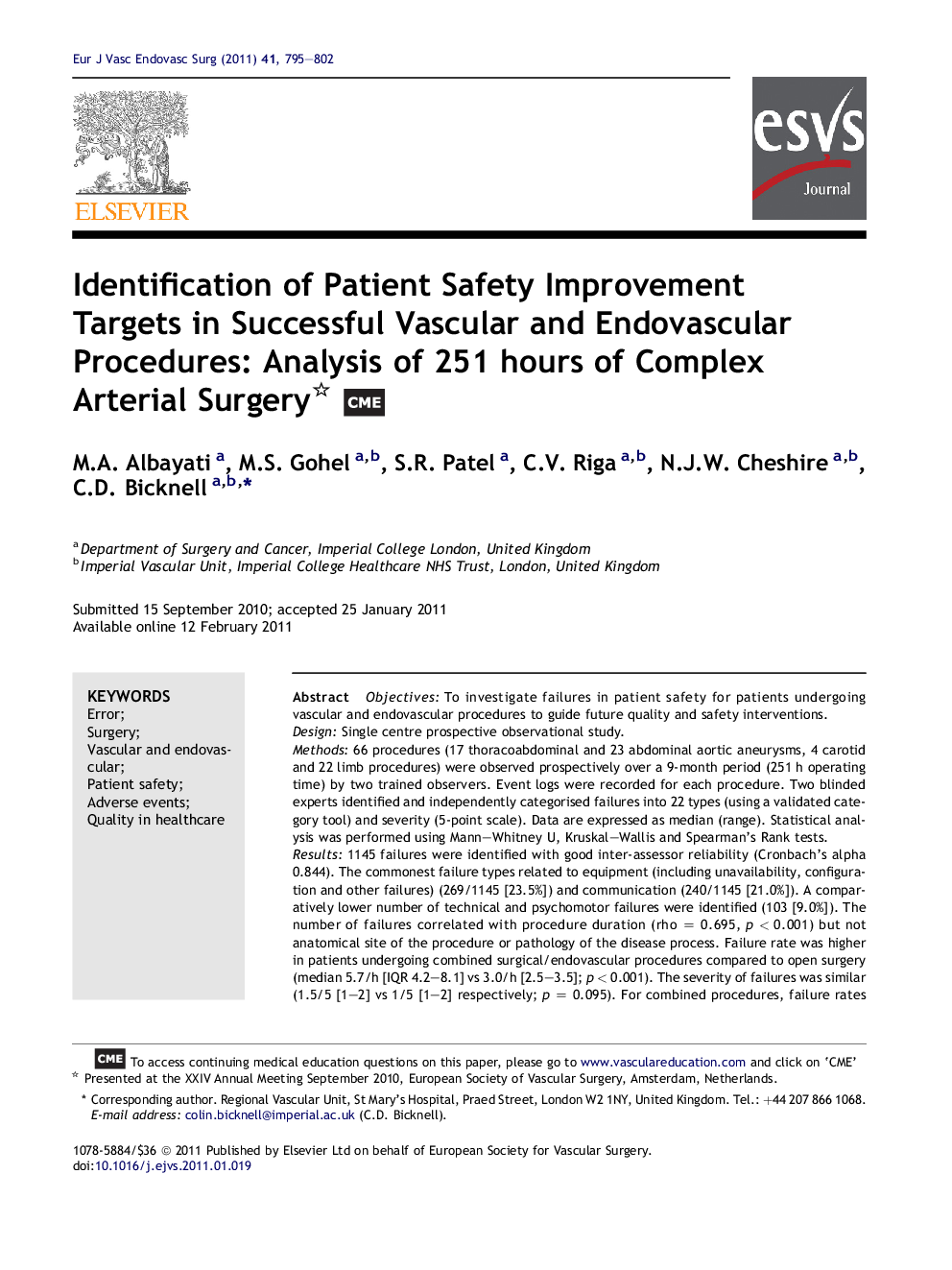| کد مقاله | کد نشریه | سال انتشار | مقاله انگلیسی | نسخه تمام متن |
|---|---|---|---|---|
| 2913325 | 1575491 | 2011 | 8 صفحه PDF | دانلود رایگان |

ObjectivesTo investigate failures in patient safety for patients undergoing vascular and endovascular procedures to guide future quality and safety interventions.DesignSingle centre prospective observational study.Methods66 procedures (17 thoracoabdominal and 23 abdominal aortic aneurysms, 4 carotid and 22 limb procedures) were observed prospectively over a 9-month period (251 h operating time) by two trained observers. Event logs were recorded for each procedure. Two blinded experts identified and independently categorised failures into 22 types (using a validated category tool) and severity (5-point scale). Data are expressed as median (range). Statistical analysis was performed using Mann–Whitney U, Kruskal–Wallis and Spearman’s Rank tests.Results1145 failures were identified with good inter-assessor reliability (Cronbach’s alpha 0.844). The commonest failure types related to equipment (including unavailability, configuration and other failures) (269/1145 [23.5%]) and communication (240/1145 [21.0%]). A comparatively lower number of technical and psychomotor failures were identified (103 [9.0%]). The number of failures correlated with procedure duration (rho = 0.695, p < 0.001) but not anatomical site of the procedure or pathology of the disease process. Failure rate was higher in patients undergoing combined surgical/endovascular procedures compared to open surgery (median 5.7/h [IQR 4.2–8.1] vs 3.0/h [2.5–3.5]; p < 0.001). The severity of failures was similar (1.5/5 [1–2] vs 1/5 [1–2] respectively; p = 0.095). For combined procedures, failure rates were significantly higher during the endovascular phase (9.6/h [7.5–13.7]) compared to the non-endovascular phase (3.0/h [1.0–5.0]; p < 0.001).ConclusionsFailures in patient safety are common during complex arterial procedures. Few failures were severe, although minor failures during critical stages and accumulation of multiple minor failures may potentially be important. Failures occurred especially during the endovascular phase and were often related to equipment or communication aspects. Interventions to improve procedural safety and quality of care should primarily target these specific areas.
Journal: European Journal of Vascular and Endovascular Surgery - Volume 41, Issue 6, June 2011, Pages 795–802